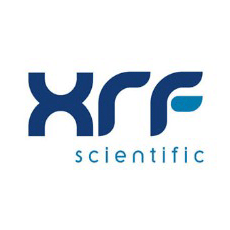Compositional analysis is a key investigative method in agriculture. It helps to protect and manage food quality while enhancing industry procedures

Image Credit: oticki/Shutterstock.com
It is crucial to select the correct technique for initiating compositional analysis. One approach to consider is thermogravimetric analysis (TGA). This procedure can provide information on a material’s configuration, combustive properties, decomposition profile, and thermal stability.
TGA analysis involves heating a material sample to track any changes. These changes are then detailed on a TGA curve, represented as a function of time or temperature. By monitoring the TGA curve, a material’s composition can be determined.
Applying compositional analysis by thermogravimetry in agriculture can help to understand biomass formation, the characteristics of the products identified in waste, and organic materials in soil.
This information can advance agricultural processes and improve related material utilization.
Fast and Economical Characterization
Conventional biomass characterization approaches are often laborious and require large sample sizes, whereas TGA is efficient and requires minimal sample.
TGA provides quick qualitative and quantitative data, which is fundamental for the swift development cycles in agricultural research and bioenergy production.
It can handle small sample sizes, encouraging lower material costs and speedier throughput—critical for routine screening and large-scale studies. This makes TGA a practical and economical choice in the agricultural field.
Thermal Behavior Insights
The thermal stability and decomposition profile of biomass are key factors in defining its appropriateness for numerous uses, including biofuel production. TGA provides invaluable information on biomass component behavior under thermal stress.
Understanding biomass stability and specific decomposition temperatures can assist researchers and engineers in creating more effective thermal processes, such as gasification and pyrolysis.
This accurate thermal characterization helps to enhance processing conditions, improving the sustainability and productivity of biomass conversion processes.
Quantification of Fundamental Elements
Agricultural biomass predominantly contains cellulose, hemicellulose, and lignin, each affecting the material’s chemical and physical properties. TGA facilitates the quantification of these parts by examining the different thermal degradation phases related to each.
Such thorough compositional analysis is critical for adapting biomass treatments and creating products that demand certain material properties. This quantification helps assess the quality and usability of biomass as a feedstock for many industrial uses.
Contaminant Detection
Inorganic contaminants—like metals and ash content—can drastically affect biomass processing and end-use quality. TGA helps identify and quantify these contaminants.
By supplying a clear profile of the ash content and other non-combustible components, TGA guarantees the biomass meets the requirements for fuel use or raw material in bio-based products.
This is especially crucial in guaranteeing the functional efficacy of biomass-fueled systems. It can also reduce contaminants’ corrosive and abrasive effects on tools and machinery.
Blending and Pretreatment Effects
Blending different biomasses and employing assorted pretreatment approaches can drastically impact the resulting material’s thermal behavior and chemical properties.
TGA is key in evaluating these effects, providing insights into how pretreatment processes alter the decomposition characteristics of biomass.
This analysis is crucial for creating effective pretreatment technologies that improve biomass reactivity and conversion efficacy in biochemical and thermochemical procedures.
Enhance Research with a TGA Tool
TGA’s capabilities make it a vital device in the agricultural industry, improving current operations and supply.
Utilizing TGA for compositional analysis provides detailed insights into the thermal properties of biomass, aiding conversion processes like gasification and pyrolysis. It can also assess carbon content in substances like soil to improve its health.
Compared to wet chemical techniques, TGA is faster, more economical, and capable of analyzing a broader range of materials.
A TGA device must be chosen based on its potential application. The automated xrTGA 1100 can analyze numerous materials, from food and plastics to minerals and cement. Its carousel, with room for 30 placements, has been developed for a greater throughput. It is user-friendly and can reach temperatures up to 1100 °C.

This information has been sourced, reviewed and adapted from materials provided by XRF Scientific.
For more information on this source, please visit XRF Scientific.